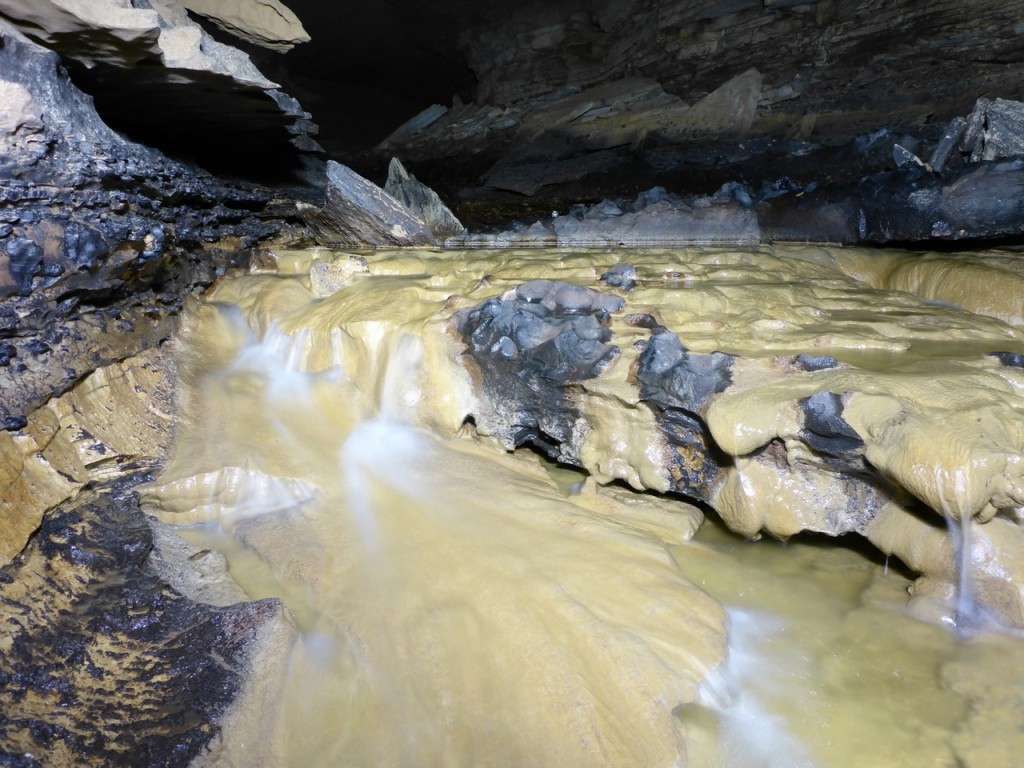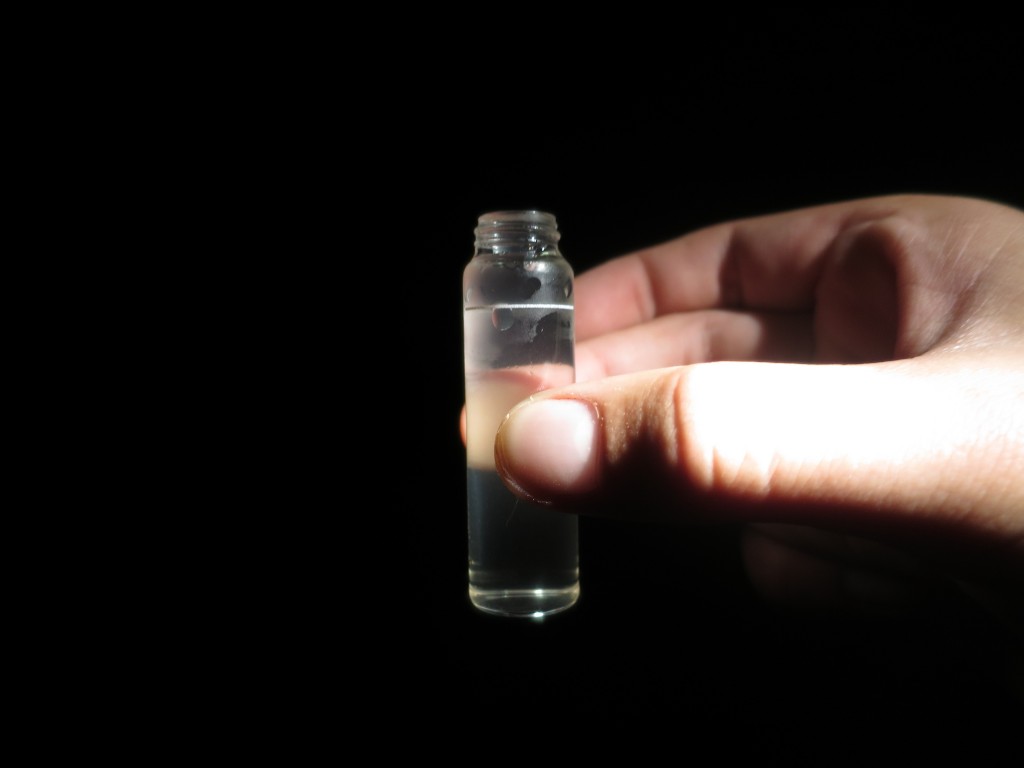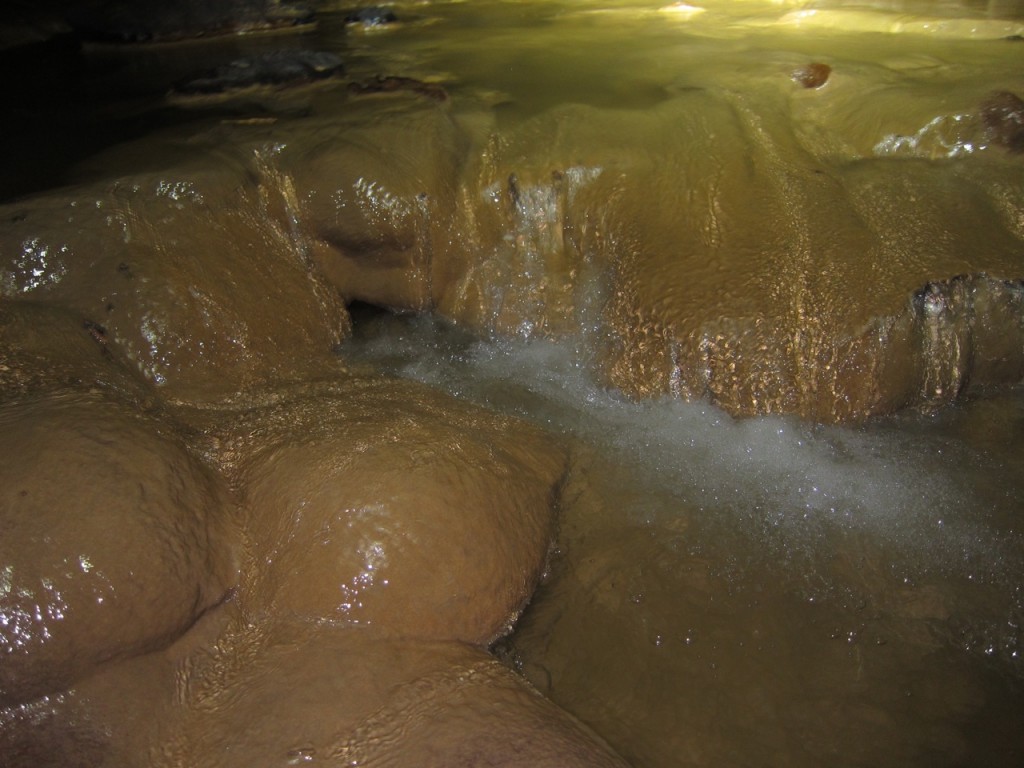Karst Terrain Flushes More Than Just Water Into Our Wet Underground World

Water flows through the Fogelpole Cave streams and looks seemingly clear and sparkling, but groundwater in karst terrain is far more susceptible to contamination. Photo courtesy Michael Bradford.
If ignorance is bliss, there are probably lots of folks who are very, very happy living on karst terrain. Because the dynamics of karst are absolutely hidden from view and immediate knowledge, conventional wisdom implies that ‘what you don’t know probably can’t hurt you.’
Unlike an easily recognized fouled surface creek or stream, awash with trash, stinky, and frothy with sludge, underground karst waterways are simply out-of-sight and out-of-mind. About 20% of the continental U.S. is composed of karst terrain, with large swaths from Texas, through Missouri and Kentucky, and into the Virginias. In Illinois, the northwest corner (Jo Daviess County) has some areas of karst, but Monroe County is the “holely land” for the state, with 40% of the county’s acreage karstified and 11,000 sinkholes to prove it. Nearly 7000 county residents are living on and with karst.
We owe our karst capital of the state status to the wonders of limestone, with nearly a mile-thick underlayment of rock beneath half of the county. Slightly acidic rain water easily dissolves limestone and, in an ever ongoing process, this constant dissolution forms surface and sub-surface cavities, cracks, fissures, conduits, pipes, capillaries, caves, emergent spring pools, collapsing sinkholes and sinkhole ponds. Karstland is simply a three-dimensional drainage system through which water flushes quickly.
The porous, hollow nature of karst terrain results in a very high pollution potential. Much of the surface water runoff entering sinkholes and caves bypasses natural soil filtration and rapidly enters our groundwater networks. Groundwater, again because of the vast underground plumbing network, can also travel very rapidly — up to several miles a day — quickly transmitting contaminants to wells and springs over a large geographic area.
Over the last decade geologists have conducted dye-tracing surveys and have thus far carefully demarcated 12 distinct subsurface groundwater recharge basins in our region. All of our karst area has not yet been mapped. Varying in size from 196 acres (Andy’s Run Spring) to 17,700 acres (Dual Spring), each recharge basin drains every sinkhole within its area. Within each basin, the subsurface water moves in a singular direction, usually through a large cave system, and finally to an emergent surface spring. The spring then feeds to a surface creek that eventually makes its way to the Kaskaskia and Mississippi Rivers. So, in each resident’s small way, Monroe County impacts the health of the entire lower Mississippi River system.
A host of factors and landowner and land manager practices contribute to the contamination and pollution of groundwater in our karst region. On highly erodible slopes, without the benefits of terracing and ground cover, soil particles, laden with metals and nutrients, such as phosphorous, are carried into groundwater. Trash and organic debris are carried by runoff into sinkholes and underground conduits.

What's in the water? Sampling done in the Fogelpole Cave System and additional areas of karst turns up some interesting findings. Photo courtesy Steve Taylor, Illinois Natural History Survey.
Fertilizers and animal wastes contain nutrients that readily enter runoff and impact water quality. The use and disposal of manmade chemicals — synthetic organic compounds, metals, pesticides, herbicides, household chemicals, paint, solvents, petroleum products, antifreeze, battery acid and roadway salts, just to start the list — unless controlled and applied correctly, can cause severe groundwater contamination and human and wildlife health problems. And, parasites and bacteria, particularly coliform bacteria which live in animals’ intestinal tracts and are present in human and animal feces, are potentially disease-causing pathogens which can be found in our groundwater. Malfunctioning septic systems and poor animal waste management practices are leading causes of pathogens in drinking water supplies.
From 1994-1997 the Illinois State Geological Survey (ISGS) conducted groundwater testing in several cave system recharge basins in our area. From December 2013 through May 2014, the ISGS, the Illinois State Water Survey and Illinois Natural History Survey repeated the testing, with particular emphasis on the 4700-acre Fogelpole Cave recharge basin.
The results and comparisons are quite fascinating. In general, herbicide contamination throughout our area is quite lower than was found in the 1990’s study. Fecal coliform (both human and bovine) pathogen contamination is ever present and steady-state, both evidence of malfunctioning or non-existent septic systems and poor animal waste management practices. But the real interesting kicker is a huge increase in personal care product and pharmaceutical contaminants in the groundwater. From sinkhole pond to kitchen faucet, through the karst surface and into the groundwater: you may not need aspirin for that headache, just a few sips of water.

Our area's cave systems provide a direct way to sample, discover, and learn what's in our groundwater. Photo courtesy Steve Taylor, Illinois Natural History Survey.
Clifftop is hosting a seminar on the results of the groundwater testing on Saturday, January 17th, 2015, from 1 to 3 PM, at the Monroe County Annex Building in Waterloo. Dr. Steve Taylor, Illinois Natural History Survey, and Dr. Walt Kelly, Illinois State Water Survey, will lead the seminar. Pre-registration is required at 618-458-4674 or clifftop@htc.net by January 15th. The seminar is free and open to the public.
CLIFFTOP, a local nonprofit organization, is focused on preserving and protecting area bluff lands.
A version of this article appeared in the 2 January 2015 edition of the Monroe County Independent.
© 2015 all content rights reserved Clifftop NFP
Comments are currently closed.
